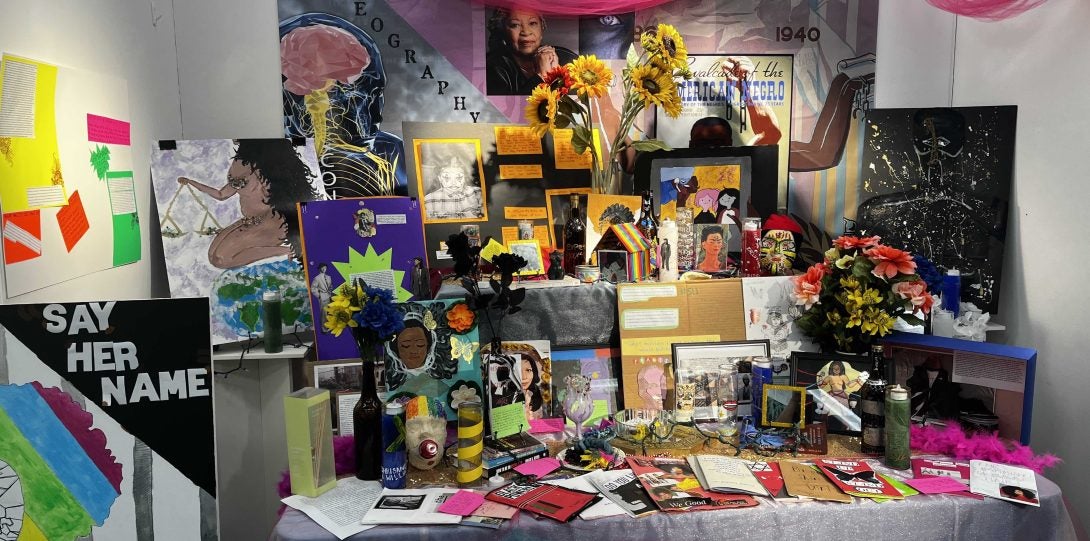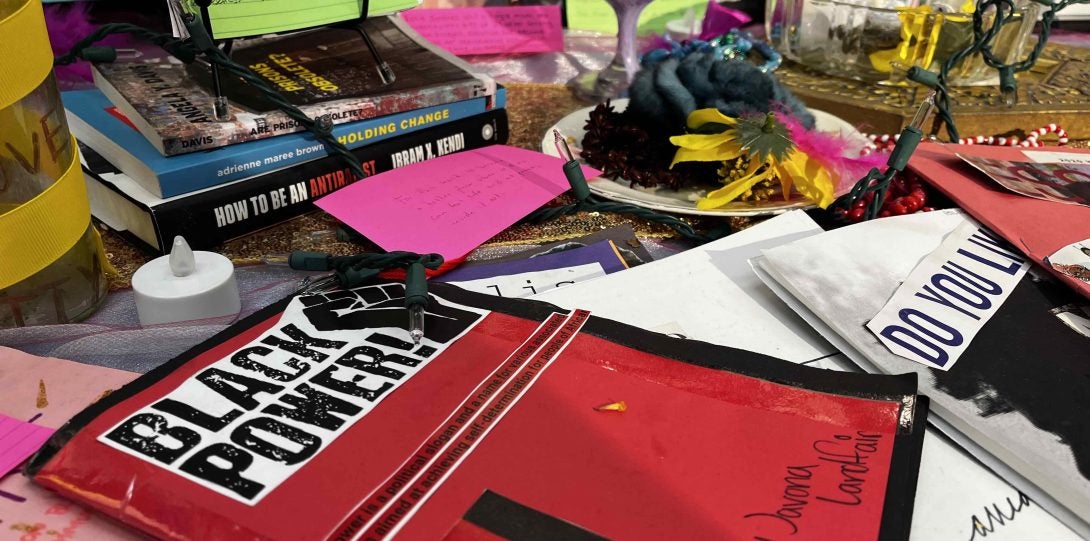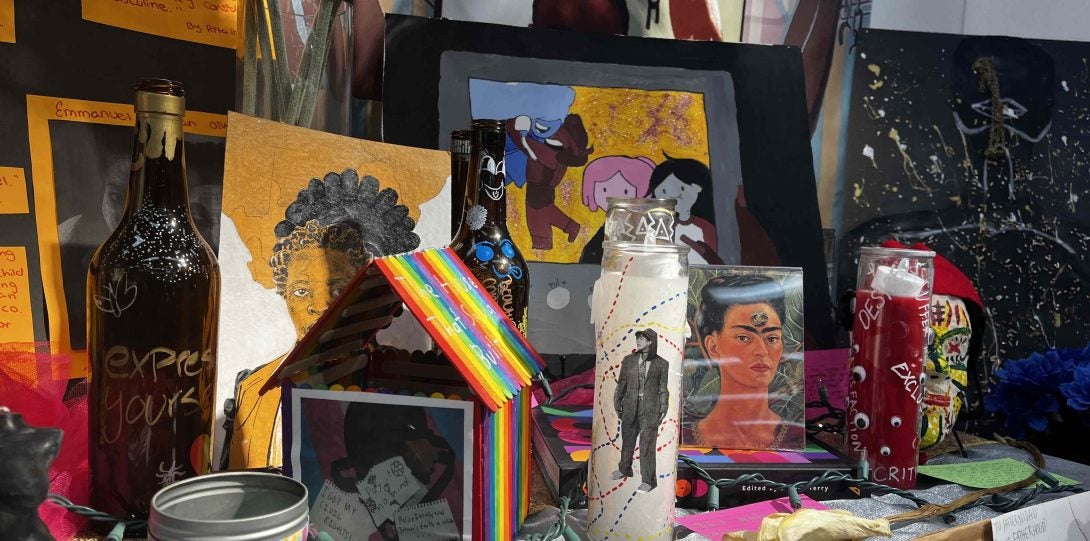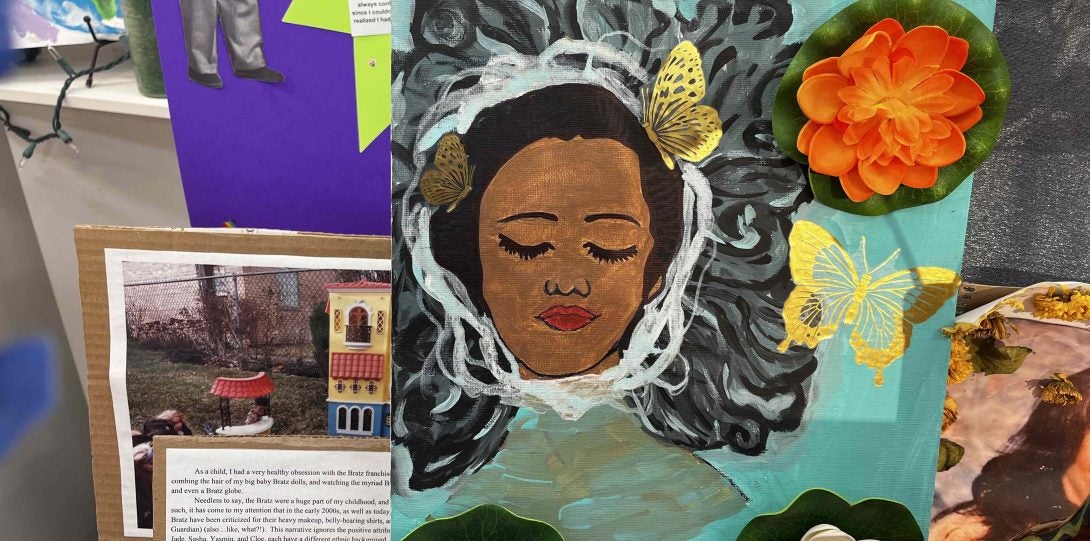Kindred Spirits
A Community Altar
For this community altar, each student commemorated the legacy, ingenuity, and fierceness of a queer and feminist BIPOC (Black, Indigenous, People of Color), alive or deceased. In dialogue with the course’s themes, they were tasked to illustrate how creative and everyday practices and Black radical traditions are mutually constituted. They each contributed three items: 1) an upcycled or devised image of their subject, 2) an object celebrating the student’s connection to earth, water, fire, or air, and 3) a written intention or a manifesto statement about their labor to contribute to a more just world.
What is the purpose of an altar? In an American context, we’re accustomed to seeing them displayed and used in religious spaces. In the Africanist religions of Vodou, Candomblé, Santeria, among others, a person builds or fashions an altar to honor an ancestor and/or one of the religion’s divinities. The person does so to maintain a connection with their ancestor and the divine, and to create a bridge between the human and ancestral realms. In addition to offering objects that celebrate the life and accomplishments of their loved one, they also say a prayer (or write an intention or a message) to conjure the spirit of the honored into the space. These are modes of self-care, self-love, and self-healing. In this light, these simple rites of ancestral and kin reclamation are spiritual in the sense that it nourishes their souls.
Assembled by the students of
Black Studies and Gender And Women’s Studies 272 / Spring 2022:
Race, Gender, Sexuality
Fartun Abdi, Ivonne Aguilera, Lilly Bond, Isabella Colon, Eddie Couder, Phillissa Dawson, Parisa Gharavi, Erika Gonzalez, Mia Hannah, Quinn Harris, Charleigh Hicks, Careen Jones, Marina Khan, Rose Macleod, Xileme Martinez, Kiara McDonald, Salena Peebles, Noble Price,
Karen Rebollar-Garcia, Bri Saldana, Isis Slatton, Tamara Sweilem,
Fiza Syed, Will Talavera, Denise Vargas, Chrisand Williams
With the instructor
Dr. Mario J. LaMothe
Acknowledgements: Special thanks to Alexandra Antoine and the African-African Cultural Center for their contribution and continued support.



